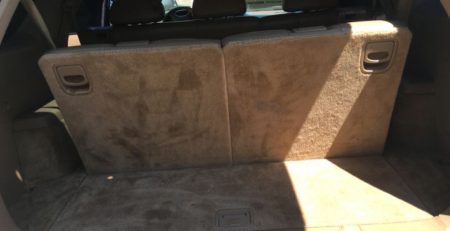How to Clean Tree Sap from Your Car
The Curse of the Sappy Trees
As an avid car enthusiast with a penchant for car detailing, I remember the first time I experienced the curse of tree sap on my brand new 1967 Ford Mustang. I had parked it under an old pine tree, and by the time I came back, the glossy finish was peppered with sticky, glistening droplets. Little did I know, this was just the beginning of a sticky situation that would lead me to master the art of removing tree sap from the car.
Tree Sap: The Silent Paint Assassin
Tree sap, while seemingly harmless, is a silent assassin that can wreak havoc on your car’s paintwork. The sugars and other compounds in the sap can react with your car’s paint, causing discoloration, and if left unattended, the sap can harden and become nearly impossible to remove without damaging the paint.
The longer the sap stays on your vehicle, the more damage it can cause. This is due to the sap’s acidic nature, which can eat away at the paint and cause permanent stains. It’s therefore crucial to remove it as soon as possible, making tree sap removal from car an urgent task for any car owner.
Nip it in the Bud: Prevention is Better Than Cure
My first encounter with tree sap taught me the importance of prevention. One simple way to avoid tree sap is to park responsibly. Avoid parking under trees, especially pines and maples, which are known for their sappy emissions.
If you can’t avoid trees, consider investing in a car cover. A good cover can protect your car from sap, bird droppings, and other harmful elements. For those seriously concerned about their vehicle’s exterior, a paint protection film (PPF) or a ceramic coating can provide an extra layer of defense against sap and other environmental hazards.
Spot the Sap Before It’s Too Late
Identifying tree sap on your car early on can save you a lot of trouble. Look out for shiny, sticky spots on your car’s surface. Sap can also leave a slightly discolored area on your paintwork, which can be an easy giveaway. The texture can be another sign – a rough, bumpy feel under your fingertips can often mean sap has started to harden on your car’s surface.
Now that you’re equipped with the knowledge to prevent and identify tree sap, the next step is learning how to clean it. Stay tuned for the next part of this guide, where we’ll delve into the methods of removing tree sap from the car effectively.
Gathering the Necessary Materials for Tree Sap Removal
When dealing with tree sap, it’s crucial to have the right tools at your disposal. Here, we’ll look at both commercial sap removers and effective household products that can help you do the job.
Commercial Sap Removers: These are specially formulated products that are designed to break down and remove tree sap without damaging your car’s paint. Brands like Turtle Wax, Goo Gone, and Bug and Tar Remover are often recommended. These products are quite potent and should be used with care, always following the manufacturer’s instructions.
Household Products: If you prefer a more DIY approach, there are several household items that can aid in sap removal. Rubbing alcohol is a popular choice due to its ability to dissolve the sap. Other options include hand sanitizer, which contains alcohol, and WD-40. Remember, these are not specifically designed for car surfaces, so they should be used sparingly and with caution.
Step-by-step Guide to Removing Tree Sap
Getting rid of tree sap may seem daunting, but with the right approach, it’s a manageable task. Here’s a step-by-step guide to help you through the process.
Pre-clean the area: Start by washing the affected area with soapy water to remove any loose dirt or debris. This will prevent scratching your car’s surface during the sap removal process.
Soften the sap: Apply your chosen sap remover or household product onto a cloth and gently dab onto the sap. Let it sit for a few minutes to soften the sap.
Wipe Off the Sap: Once the sap is softened, gently wipe it off with a clean, soft cloth. Be careful not to scrub too hard as this may damage the paint.
Rinse and Dry: Rinse the area with clean water and dry it thoroughly. This will help to remove any remaining sap remover or household product.
Inspect and Repeat as Necessary: Inspect the area for any remaining sap. If necessary, repeat the process until all the sap is removed.
Professional Sap Removal and When to Consider It
While many instances of sap can be dealt with at home, there are situations when professional intervention may be necessary.
Severity of Sap Damage: If the sap has been left on the car for a long time, it may have hardened and possibly caused damage to the paint. In such cases, professional removal is advised to prevent further damage.
Trust in Professional Results: A professional will have access to stronger, more specialized products and tools. They will also have the expertise to safely remove the sap without harming your car’s finish, providing peace of mind.
Maintaining a sap-free car is key to preserving your vehicle’s appearance and value. Here are a few tips to keep in mind.
Regular Cleaning: Regularly washing your car will help keep it free from tree sap and other debris. This is especially important if you park your car under trees often.
Waxing and Sealing: Applying a quality wax or sealant to your car’s paint can provide a protective barrier against sap and other contaminants.
Immediate Sap Removal in Future Instances: If your car does get sap on it, try to remove it as soon as possible. The longer the sap sits, the harder it is to remove and the more potential it has to cause damage.









